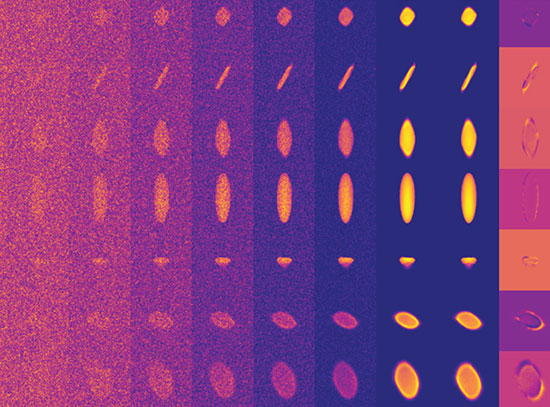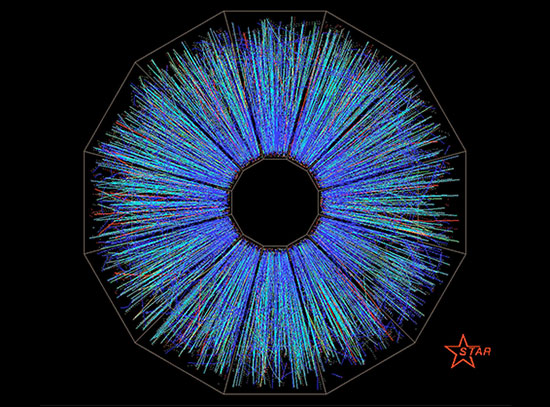Brookhaven Lab Releases 2004 Environmental Report
October 4, 2005
UPTON, NY - The U.S. Department of Energy's Brookhaven National Laboratory has issued its 2004 Site Environmental Report. Report highlights include significant progress on the environmental cleanup of the site, continued expansion of pollution prevention initiatives, and reduced environmental effluents and emissions. The document can be found on the internet at http://www.bnl.gov/ewms/ser/.
The Site Environmental Report is prepared annually to summarize Brookhaven's environmental data; environmental management performance; compliance with applicable DOE, federal, state, and local regulations; and restoration and monitoring programs. It also documents steady progress toward cleaning up the site and fully integrating environmental stewardship into all facets of the Laboratory's mission. These cleanup and integration efforts are major commitments for Brookhaven, one of ten national laboratories managed by the Office of Science of the U.S. Department of Energy (DOE).
Brookhaven maintains a comprehensive environmental monitoring program to ensure protection of human health and the environment. This program monitors potential pathways of exposure, measures potential environmental impacts from Laboratory operations, and provides data to evaluate compliance with applicable regulatory limits. Environmental program highlights from 2004 include the following:
- In 2004, Laboratory operations led to seven awards for environmental performance from diverse stakeholder groups. Additionally, Brookhaven was accepted into the Environmental Protection Agency's (EPA) Performance Track Program, which is EPA's "gold standard" for facility-based environmental performance - a standard that participating members strive to attain as they "meet or exceed their performance commitment."
- In 2004, an environmental management system surveillance audit determined that Brookhaven remains in conformance with the globally recognized ISO 14001 standard. ISO 14001 requires an organization to identify potential environmental impacts and establish controls needed to minimize impacts, to monitor and communicate environmental performance, and to establish a formal process for continually improving the system. Brookhaven was the first Long Island-based operation and the first DOE Office of Science facility to achieve this accreditation.
- Since 1999, Brookhaven's pollution prevention program, recycling programs, and conservation initiatives saved more than $1.6 million and supported the recycling or reuse of more than 2.2 million pounds of industrial materials. In 2004, BNL invested approximately $86,000 in eight newly funded pollution prevention projects, with an annual anticipated savings of $60,500, and an average payback period of 1.3 years.
- In 2004, the dose to a hypothetical member of the public exposed to the maximum level of radiation due to Laboratory air emissions was 0.04 millirem (mrem), or less than 0.02 percent of the average annual natural background level of radiation (approximately 300 mrem on Long Island) and well below the 10 mrem limit set by the U.S. Environmental Protection Agency (EPA) under the Clean Air Act. This dose is calculated for a hypothetical individual residing at the Laboratory boundary 24 hours a day for one year. The EPA regulates Brookhaven's radiological air emissions.
- Monitoring showed that deer and fish on and near the site still contain low levels of Brookhaven-related radionuclides. The calculated maximum hypothetical radiation doses for a person eating locally caught deer and fish were estimated at 1.3 mrem and 0.37 mrem, respectively. The annual dose from deer meat is based on a consumption estimate of 64 pounds per person, and the dose due to fish is based on a consumption estimate of 15 pounds per person. Both estimates are very conservative. Hunting is not allowed on the Brookhaven site, and the New York State Department of Health (NYSDOH) has determined that no restrictions on hunting or consumption of deer taken near Brookhaven are needed. NYSDOH has also evaluated data on Peconic River fish and concluded that the existing general fish advisory for all N.Y. State ponds and rivers, including the Peconic, is sufficient. This general advisory is to protect residents from eating large amounts of fish that have not been tested or may contain unidentified contaminants, and recommends that no more than one meal (1/2 pound) per week of fish should be consumed from any freshwater location in the state. With the recent completion of the Peconic River and site-wide soils cleanup projects, fish and deer contaminant levels are expected to drop further.
- In 2004, waste water discharges from the Laboratory's sewage treatment plant, a discharge point regulated by the New York State Department of Environmental Conservation (NYSDEC), complied with state permit limits in greater than 99 percent of the samples taken. Six exceptions included two elevated iron readings (traced to incorrect placement of a sample collection probe), two elevated methylene chloride readings (due to analytical lab cross-contamination), and two related to total suspended solids (due to incorrect placement of sampling equipment). In terms of radiological releases, the average tritium concentration during 2004 was 86 picocuries per liter, or less than one-half of one percent of the EPA drinking water standard of 20,000 picocuries per liter (a picocurie is a measurement of radioactivity equivalent to one-trillionth of a curie). Data from upstream, downstream, and control locations showed that the Peconic River water quality on site is consistent with background and control locations (areas not influenced by Brookhaven operations).
-
Areas of the Laboratory site where past activities have caused groundwater, soil, and sediment contamination continued to undergo monitoring and cleanup in 2004. Program highlights:
The completion of a successful effort to remove contaminated filters and duct liners from belowground air ducts in the Brookhaven Graphite Research Reactor using remotely operated equipment, and the installation of the remaining on- and off-site groundwater remediation systems.
During 2004, 12 remediation systems removed 652 pounds of volatile solvents from on- and off-site groundwater, returning approximately 1.5 billion gallons of clean water to the aquifer. Since December 1996, Brookhaven has removed 4,808 pounds of volatile solvents from the aquifer by treating nearly 8.4 billion gallons of groundwater. - Several projects were funded and conducted in 2004 within the on-site Upton Ecological and Research Reserve. Projects included the development of a research database and forest health monitoring protocols, educational and outreach activities, and radio telemetry work to track the eastern hognose snake and spotted turtle. Also in 2004, the Upton Reserve conducted its first prescribed fire, treating approximately seven acres to improve germination and survival of oak seedlings. The fire also reduced forest fuels that tend to increase the likelihood and severity of wildfires. Post-fire monitoring is being conducted to determine whether the prescribed fire is having the expected beneficial effects.
Environmental restoration at the Laboratory is conducted under the oversight of NYSDEC, EPA, and DOE, and in cooperation with the Suffolk County Department of Health Services (SCDHS).
Brookhaven has published annual site environmental reports from 1962 to 1966 and from 1971 to 2004. Summary reports for the years 1947 to 1961 and 1967 to 1970 are also available. Data summarized in the 2004 report were obtained through testing performed by state-certified laboratories, SCDHS, NYSDOH, and NYSDEC.
To obtain a copy of the summary booklet and an accompanying CD containing the full report, call (631) 344-3711. Copies are also available for review at public libraries near Brookhaven. In addition, the full report and summary are available online at http://www.bnl.gov/ewms/ser/.
2005-10376 | INT/EXT | Newsroom









